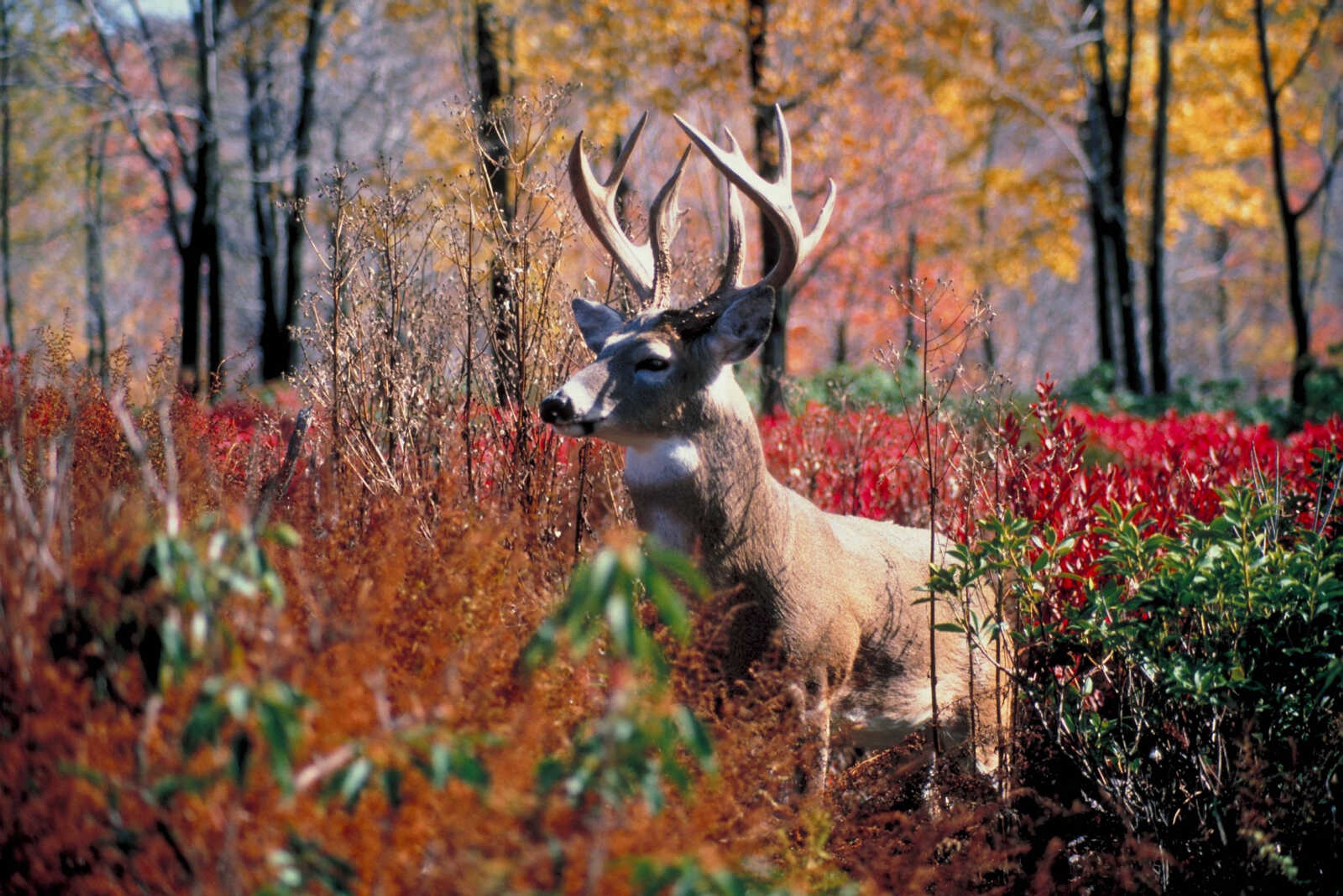Deer disease a hot topic at agency's open house
The containment of chronic wasting disease, a fatal ailment to white-tailed deer, and the effect proposed amendments to curb its spread could have on deer farmers remained a hot topic at an open house hosted by the Missouri Department of Conservation on Tuesday...
The containment of chronic wasting disease, a fatal ailment to white-tailed deer, and the effect proposed amendments to curb its spread could have on deer farmers remained a hot topic at an open house hosted by the Missouri Department of Conservation on Tuesday.
More than 150 area hunters, deer farmers and agency staff and biologists gathered at the Knights of Columbus Hall in Jackson to discuss management of the popular Southeast Missouri game animal.
Attendees made their way around informational booths and discussed deer topics with each other and agency staffers. Topics included the history of Missouri deer management and the state's new deer management plan, deer population numbers and trends, possible regulation changes to archery hunting and crossbow use, timing of seasons, harvest limits, and management efforts for chronic wasting disease.
Jeff Layton of Cape Girardeau attended the open house to express concerns about the proposed movement of deer season one week later in the year, a proposed limit on the number of bucks a hunter may harvest, and the cost for Missourians to hunt deer in Illinois.
Layton hunts deer in Pulaski County, Illinois, because the deer are bigger, he said. Layton calculated he spends five times more to hunt in Illinois as a Missouri resident than an Illinois resident is charged to hunt in Missouri.
Moving firearms season to one week later -- incorporating Thanksgiving -- will match Missouri's hunting season with that of Illinois, and "I can't do two at the same time," Layton said.
Missouri's current firearms season falls at the peak of deer mating season, making bucks more vulnerable to harvest -- a good deer management strategy in the past, according to the agency. A later season would maintain "dominance hierarchies" so less-fit bucks would have less of a chance to breed. Moving the season also would allow hunters more time to hunt.
Randy Windeknecht attended the open house for the same reasons as Layton and learn more about the potential regulations on captive-deer facilities and the spread of chronic wasting disease.
The disease is caused by a mutated protein that attacks a deer's nervous system. It does not harm humans, but it is fatal to deer and elk. The protein is spread by deer-to-deer contact, including through the soil in which dead deer decompose. The disease has no cure.
Windeknecht said he believes the state is doing the best it can to manage the disease.
He and Layton said they have hunted in areas where a similar disease, called hemorrhagic disease, which includes the bluetongue virus and epizootic hemorrhagic disease virus, wiped out deer farms. Both are in favor of further regulations of captive-deer facilities to prevent the disease's spread.
The disease needs to be monitored closely, or it could have "astronomical" consequences, Layton said.
The department's Conservation Commission recently approved proposed amendments to regulations of hunting preserves and wildlife breeding facilities that hold white-tailed deer.
That includes banning the importation of live white-tailed deer from other states; improving fencing requirements for captive-deer facilities; requiring all deer 6 months old and older that die in a conservation department-licensed facility to be tested for chronic wasting disease; and mandatory enrollment of all captive herds in a disease-monitoring program.
Charles Anderson, resource science supervisor with the agency's office in Jefferson City, Missouri, manned the chronic wasting disease table Tuesday evening.
Anderson said he had heard questions and concerns from residents on both sides of the debate. Some attendees believe captive deer should not be allowed in the first place, he said, while others thought enough prevention is already being done to combat the disease's spread. Known cases of chronic wasting disease have not crept past a small area in northern Macon and Linn counties in Missouri, Anderson said.
The way Cathy Brumitt and Farris Adams see it, the animals deer farmers raise are like members of the family. The two showed off photos of fawns cuddled up next to children. A buck was named Texas Tebow and a doe named Dogwood.
Brumitt was in the deer-farming business with her husband, and got out of it because of the time commitment and the money lost, she said. Half her herd was sold to Adams. Their deer are raised to be sold or have their sperm sold to hunting preserves.
Deer breeders have a lot invested in their animals, including money for disease testing, fencing and veterinarian bills, along with blood, sweat and tears, Brumitt and Adams said. They don't want chronic wasting disease to infect their herds, either.
"We don't want it any more than they do," Brumitt said, referring to the Missouri Department of Conservation.
The two agree borders for deer importation should not be closed, because there would be too much inbreeding. However, Brumitt and Adams would support an amendment forbidding the importation of deer from disease-positive areas.
Both favor deer being classified as livestock under the Missouri Department of Agriculture.
"They already consider elk livestock; why not deer?" Brumitt asked.
A bill that would shift management of captive deer to the state Department of Agriculture passed through the General Assembly last month, and Missouri Gov. Jay Nixon has until July 14 to take action on the measure.
Brumitt said chronic wasting disease prevention and regulation is a touchy subject because of money and control, and Adams said he believes deer entities need to work together on the issue.
ashedd@semissourian.com
388-3632
Pertinent address:
3305 N. High St., Jackson, MO
Connect with the Southeast Missourian Newsroom:
For corrections to this story or other insights for the editor, click here. To submit a letter to the editor, click here. To learn about the Southeast Missourian’s AI Policy, click here.









